The Overland is still counted among the great rail journeys of Australia, but at just twice per week and barely 20,000 passengers per annum, it no longer handles a major part of the transport task. It’s rare to see a consist larger than 6 or 7 cars. But it wasn’t that long ago that the train was the way to get between Adelaide and Melbourne – with big consists of 15 carriages or more running through the night in both directions.
This post is a collection of the best photographs of large Overland consists I could find. If you have one that’s not included here, please let me know in the replies, or drop me a line using the comment form, here.
Australian National era
“Classic Overland” – early ’80s Australian National
This undated photo, likely circa 1980, shows The Overland climbing into the hills at Petwood, with what looks like a 16 or 17 car consist – larger than normal, but fairly typical for the era, when ridership was around 180,000 people per year (an average of 250 people per train). This is arguably the quintessential Overland, with the maroon-and-silver livery of the passenger stock matched by the 900-class locos, giving a true “streamliner” aesthetic. Photo: John Kirk via Beyond Trains at Flickr.
Victorian Railways S-Class
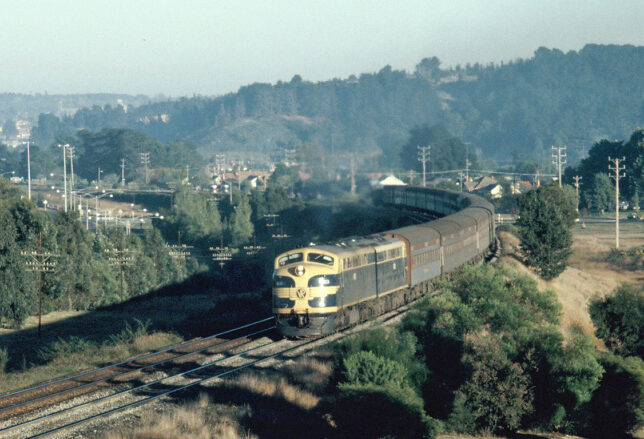
A double-headed Overland led by S313 and S315 with 16 carriages in tow climbs Warrenhip Bank into the rising sun, east of Ballarat on 21 April 1981. Photo: Ron Woods via VictorianRailways.net.
900-Class triple-header near Lynton
Spencer Street – 1984
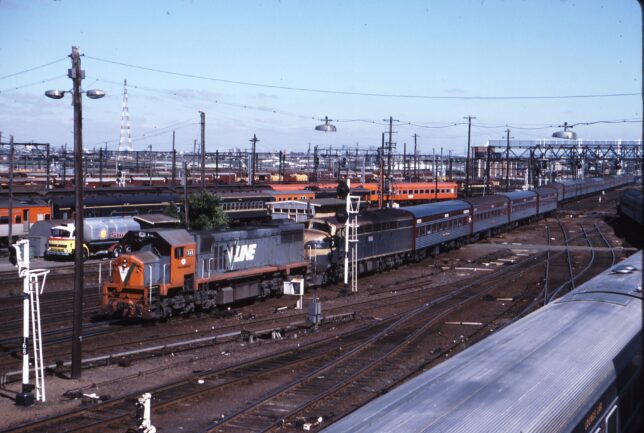
By the mid-80’s, Victorian motive power was generally in charge of The Overland. X45 and S312 lead this 17-car consist into Spencer Street on the 28th of December, 1984. Image: Weston Langford
Fosters Corner, Belair – 1986
17 carriages plus two motorails coming out of Belair National Park, on the final run to Adelaide. Video: Chris Drymalik (of ComRails) at YouTube
Callington Sunrise, 1987
Here we’ve got V/Line X51 and AN934 climbing the grade at Callington with a decent 14 carriages in tow, plus the motorail, around dawn on 11 October 1987. Photo: Bingley Hall at Flickr.
The AFL era
Airline deregulation in the early 1990s, and the resultant reduction in airfares, resulted in permanently lower ridership for The Overland. At the same time however, the entry of the Adelaide Crows into the AFL in 1991, and later Port Power in 1997, ushered in a new era of occasionally enormous Overland consists. Even as its core business declined, by far the largest Overlands were all run after 1990 – and all of these in association with the AFL finals.
1993 – Adelaide makes the finals
The Adelaide Crows’ first appearance in a preliminary final was on 18 September, where they famously squandered a 42-point lead at half-time, losing to Essendon. But footy fans didn’t really take to the train in large numbers – according to the November 1993 edition of Catchpoint, the Overland was only the standard 12-car consist.
1996 Grand Final – North Melbourne vs Sydney
This photo of CLP17 leading 15 cars at the Tottenham flyover is dated the morning of the 1996 Grand Final. Photo: Chris Nuthall on Flickr.
1997: Adelaide vs. St. Kilda
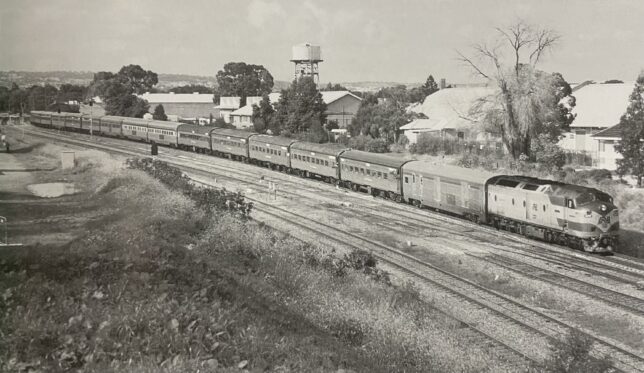
The Overland was built up to 15 cars for the trip to Melbourne on Friday 26 September, and again for the return journey the following day. Gavin Hughes caught this photo of CLP17 leading the 15-car set back into Keswick on the morning of Sunday the 28th (c/- Catchpoint, November 1997 issue).
1998: Adelaide vs North Melbourne
The Overland of Friday night, 25 September, left Keswick with an “almost record” 20 carriages. Early on the 26th, we see NR92 leading the Melbourne-bound Overland service at Altona Junction, on the morning of Adelaide’s second AFL premiership win. Photo: Chris Nuthall on Flickr.
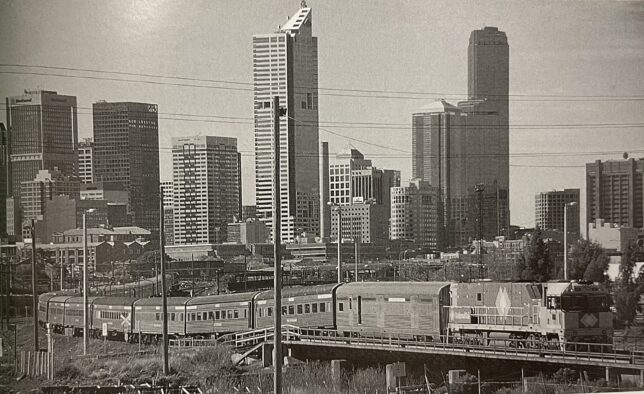
Paul Bishop captured this photograph at Melbourne, as NR8 hauled the empty consist from Spencer Street to Dynon (courtesy Catchpoint, November 1997 issue).
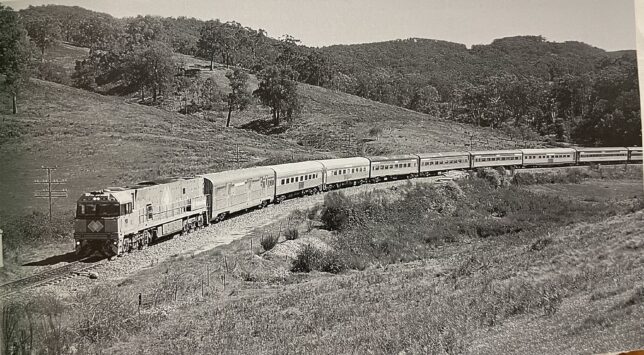
On the way back in the Adelaide Hills at Yantaringa, approaching the Ambleside Tunnel, Sunday morning 27 September (Photo by Ivan Marchant, also in Catchpoint November 1997)
2001 AFL Finals Season
Elimination Final: Adelaide vs. Carlton
Grand Final: Essendon vs Brisbane
2003 Preliminary Final – Port Adelaide vs. Collingwood
On Friday 19 September 2003, the Overland was built up to 32 cars to cater for the demand of Port Adelaide fans on their way to their team’s first Preliminary Final appearance – a record that stands to this day. The very large consist was assembled by pilfering stock from The Ghan and Indian Pacific; even this was insufficient to meet the demand, however the length was limited by available carriages and platform lengths at Spencer Street.
There seems to be some uncertainty about the exact number of carriages; the November 2003 edition of Catchpoint suggests the consist was only 30 cars, and the same on the return journey. However, the above photo by David Arnold in the same issue suggests the return consist was only 28 cars. Railway Digest and the ABC article linked above agree on 32 cars. RD claims this year as the record, but the ABC quotes a GSR representative saying that the train for one of the Crows’ 1990s Grand Final wins was larger (the evidence is against this – the consist appears to have been 15 cars in 1997 and 20 in ’98).
2007 Grand Final – Port Adelaide vs Collingwood

James Brook (AKA “VRfan” from Railpage and Flickr) snapped a photo of a 21-car train full of soon-to-be-disappointed Port fans at Moorabool on the morning of the Grand Final. Unfortunately his website is no longer operational, and the Wayback Machine only archived the thumbnail.
2012 – Joint Indian-Pacific / Overland
An unusual sight of a combined Indian-Pacific / Overland service from Melbourne of 22 cars (plus two motorail wagons) at Callington Curve, starting the big climb to Mount Barker Junction, on the way to Adelaide. Photo: Daven Walters via Flickr.
“The Crowverland”
28th September 2017, carrying Crows fans on their way to the AFL Grand Final the following day, where Adelaide goth thumped by Richmond. It wasn’t huge by historical standards, but this 10-car Overland was nevertheless the largest Overland since the reduction of its frequency to twice-a-week. Uniquely, news coverage of the journey gives us the actual patronage as well – 272 people. Excluding the cafe and luggage cars, that’s an average of 34 passengers per car, and a capacity factor of just 67% (assuming 3 premium and 5 economy class cars) – surprisingly low for what was billed as a sellout service.
Small Overlands
It’s fair to say that today’s Overland is a shadow of its former self, with annual ridership barely 10% of its glory days. These days, a typical consist is just 6 cars – two first and two economy class sitters, plus the cafe car and brake van. Even in the most extreme circumstances – a South Australian team in the Grand Final, or an airline shutdown – we no longer see consists larger than 10 cars. The rollingstock simply isn’t available; much of The Overland’s former stock has been sold and converted to freight crew cars, and the Ghan and Indian Pacific stock no longer includes sitting carriages suitable for building up a larger Overland service.
But The Overland has always been built up or down to suit demand, and so small consists are hardly unique to the present-day. It may be struggling along, just barely surviving on the back of ongoing state-government subsidies, but it’s not in a death-spiral. In fact, the most recent patronage statistics show a 40% improvement over pre-pandemic numbers. Despite the slow speed, the twice-a-week frequency, and the antiquated rollingstock, The Overland retains a small but durable market niche. This augers well for the prospects of a future service, brought up to modern standards of speed, frequency and comfort.





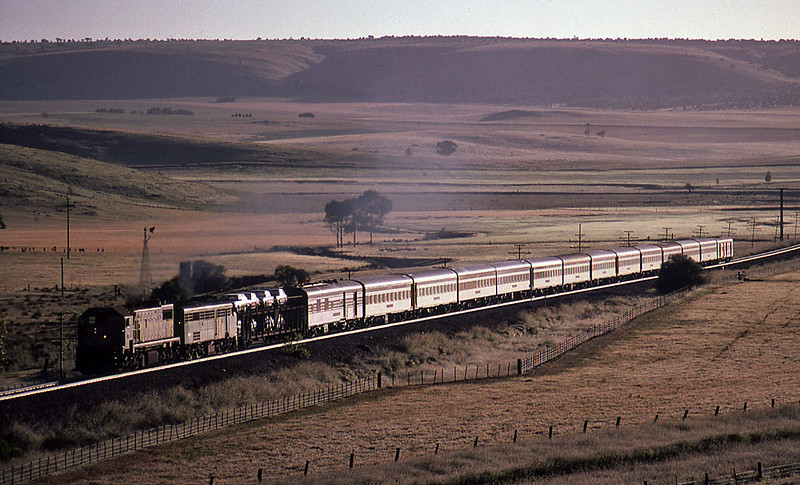

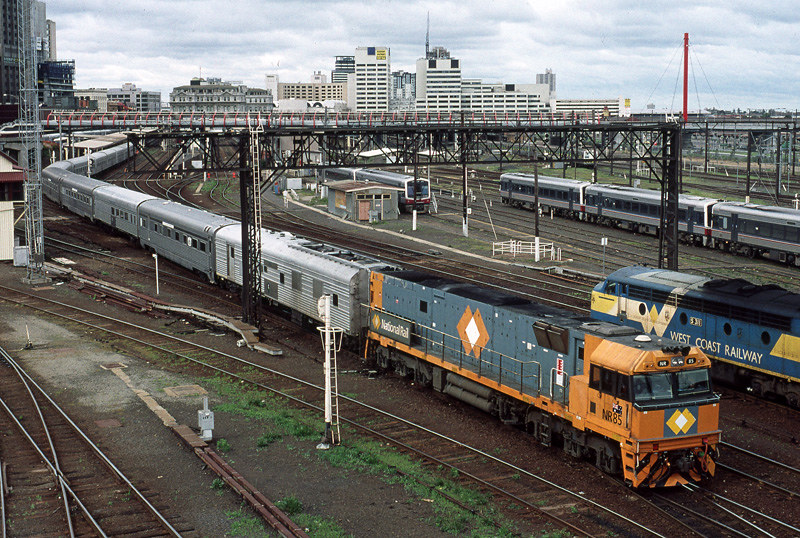
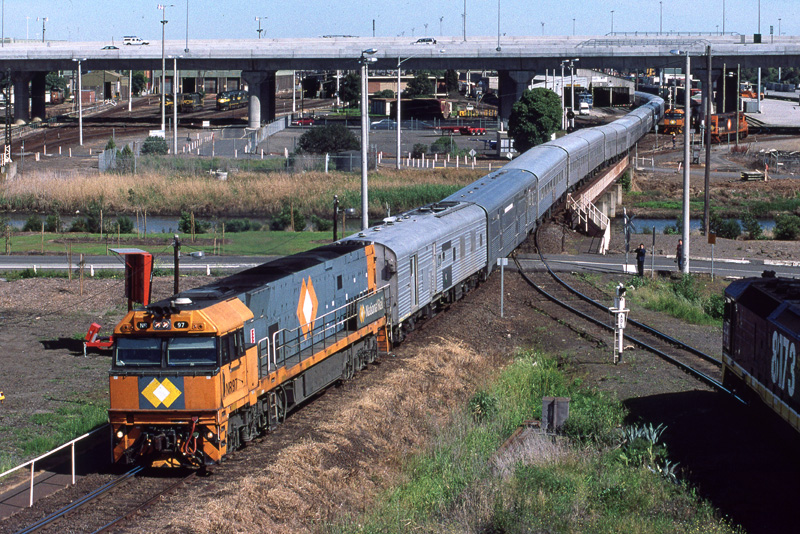
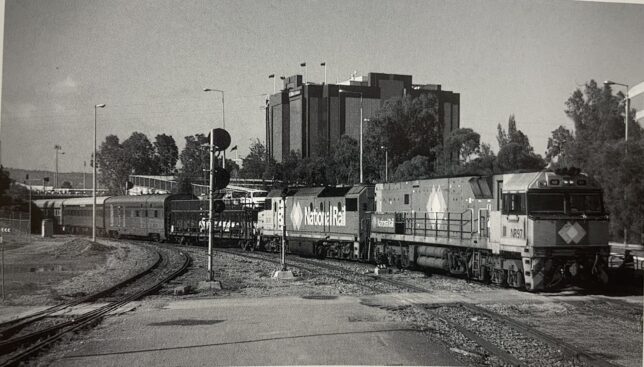

Having had a meeting with JBR CEO and Operations Manager last year, the vibe I received that they weren’t interested in increasing services unless the y received more Government funding.
It would be far better to keep the existing Overland as an intercity passenger/ tourist train.
Journey Beyond Rail have called EOI on the sale of their train, but it seems to be slow to find a buyer.
There was hope that Talgo would take an interest for a Fast Train to Melbourne via Ballarat but all has gone quiet.
One thing to keep in mind is that the ‘old’ Overland was a night train predominately sleeping carriages which were lower capacity than the day train with siting cars that currently runs – so patronage on the long trains might not be as high as what it seems.
There’s a bit of discussion of capacity in my previous post about historical patronage. While its true that there were fewer seats/berths on a sleeper (20 for roomettes, 40 for twinettes) compared to a second-class sitter (63), capacity factor of those sleepers was generally very high, as the consist could be built up or down according to demand.